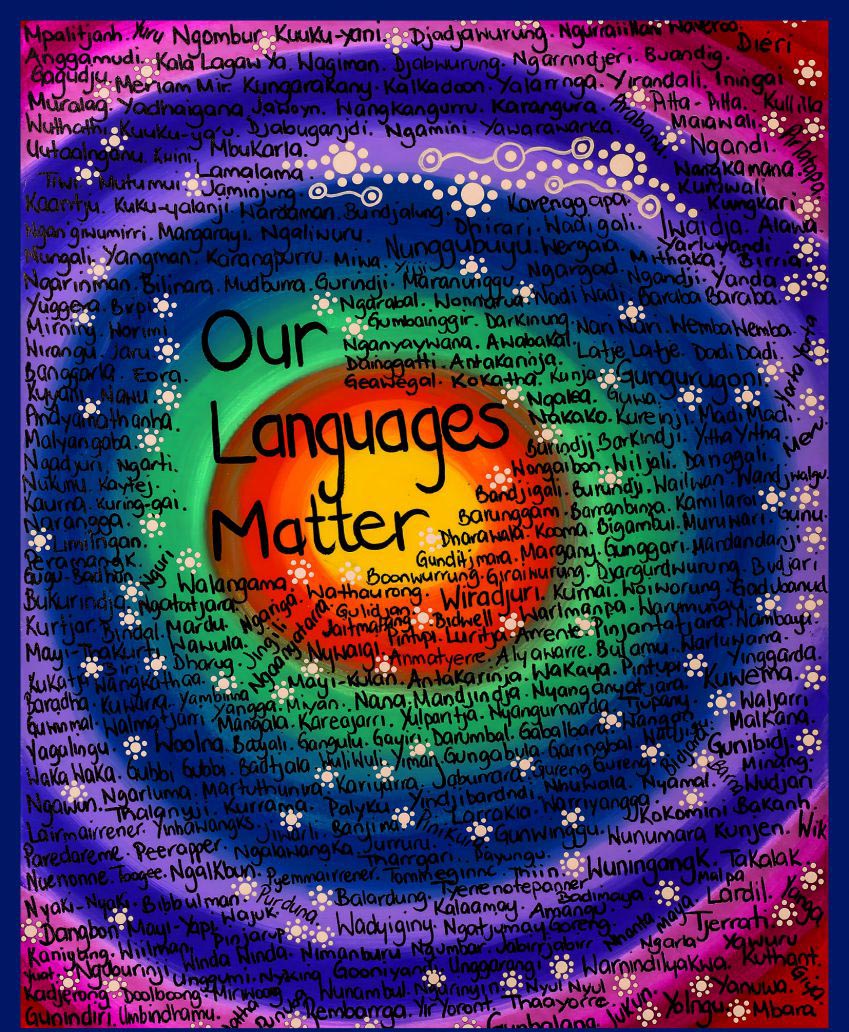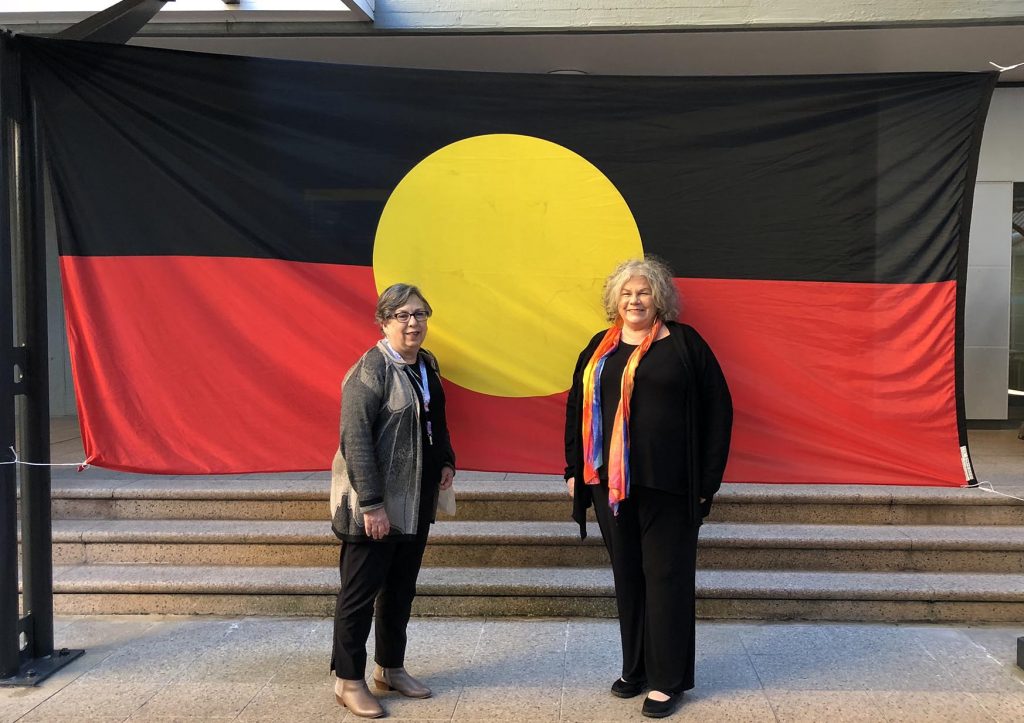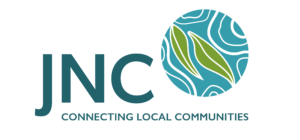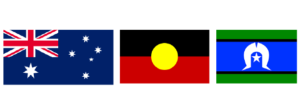Mother Language Day and Aboriginal languages

Today, on International Mother Language Day, we celebrate Aboriginal languages.
Indigenous languages are integral to who we are, and how we relate to other people.Did you know, for example, that there’s no “I” or “me” in the Aboriginal language? Those words don’t exist. This gives you an indication of the social structures of Aboriginal Peoples, and the primary importance of community.
Mother languages in our local community
I was born in Gadigal country and grew up in Maroubra. In my role, I support Aboriginal People living in the Randwick local government area.
International Mother Language Day has been observed every year since February 2000 to promote linguistic and cultural diversity and multilingualism.
The United Nations Declaration on the Rights of Indigenous Peoples (Article 13) states:
“Indigenous Peoples have the right to revitalise, use develop and transmit to future generations their histories, languages, oral traditions, philosophies, writing systems and literatures, and to designate and retain their own names for communities, place and persons.”

Languages in our community
In the Australian 2016 Census, nearly 650,000 Australians identified as Indigenous. Of these, around 10% reported themselves as speaking an Indigenous language at home (they could also be speaking English and/or another Indigenous language).
In our own Randwick LGA community population of around 155,000, around 2100 people are Aboriginal or Torres Strait Islander Peoples.
In addition to the Aboriginal languages spoken by our local community , the people living in this area have a great variety of mother languages – for example Mandarin (7.2%), Greek (3.2%), Cantonese (3.0%), Indonesian (1.6%) and Spanish (1.6%).
Let’s not lose our languages
In 1788 there were between 300 and 700 Indigenous languages spoken across Australia by millions of people. In Australia’s 2016 census, 160 Indigenous languages were reported to be spoken at home as the mother language, but only 13 of those languages are still spoken by children.
It’s predicted that in about 6 decades only 13 of Australia’s Aboriginal languages will be left, unless something is done now to encourage these children to keep speaking their language, and to encourage children from other language groups to start speaking their heritage languages.
Other world languages are also disappearing. At least 43% of the estimated 6000 languages spoken in the world are endangered. Only a few hundred languages have genuinely been given a place in education systems and the public domain, and less than a hundred are used in the digital world.
Every two weeks a language disappears, taking with it an entire cultural and intellectual heritage.
Getting our mother language back
Language is vital to our Aboriginal Peoples. It was something that was taken away from us. From a trauma-based perspective, in the context of colonisation, it is important to us that we are getting it back.
The majority of Aboriginal People who live a traditional Aboriginal life can speak up to five languages or more. They have kept the language alive. And in areas where use of traditional languages is not so strong there are efforts to strengthen language use.
Aboriginal Affairs NSW has had a longstanding program to bring back Aboriginal languages. People on the mid north coast are already bringing back their language – among the Bundjalung people in northern NSW in particular, with language taught in many schools.
In our own area of La Perouse, the La Perouse Aboriginal Land Council is working on the Bidjigal language and researching the history of the language as well.
In New South Wales as a whole, the number of students learning Indigenous languages has been growing. NSW Department of Education data shows that 14 primary and central schools were teaching an Aboriginal language to 1,657 students in 2014. At the end of 2018, 58 schools were teaching languages to 8,777.
The University of Sydney’s Master of Indigenous Language Education has been designed to train the next generation of language teachers from Aboriginal and Torres Strait Island communities. More programs like this are needed, and more teachers.

The NSW Department of Education notes: “Learning an Aboriginal language strengthens Aboriginal students’ identity and pride, and the stronger a student’s cultural identity, the better able they are to engage in learning. For non-Aboriginal students, learning a local Aboriginal language provides an insight into and better understanding of the world’s oldest living cultures.”
Three reawakening languages are now being taught at university level: Kaurna, Gamilaraay and Wiradjuri. Other languages still spoken by children and taught at universities include Yolŋu Matha through Charles Darwin University, and Pitjantjatjara through the University of South Australia.
Retaining Aboriginal language is really important because when children are learning culture and our history there are subtleties that can only be found through the language.
We all have indigenous languages
Most people who come to settle in Australia – refugees, business migrants, family members and workers – bring their own mother language, their indigenous language, with them. And we should encourage this. They should not be seen as inferior because they may not be proficient in English. They are preserving their mother language, and with it, their culture and history.
Our mother languages, according to the UN, “are the most powerful instruments of preserving and developing our tangible and intangible heritage.”
If we promote the use of mother languages, this will encourages linguistic diversity and multilingual education. It also “will develop fuller awareness of linguistic and cultural traditions throughout the world and to inspire solidarity based on understanding, tolerance and dialogue.” (UN)
Useful references include: http://theconversation.com/the-state-of-australias-indigenous-languages-and-how-we-can-help-people-speak-them-more-often-109662
– Barbara O’Neill, Aboriginal Community Support Worker, JNC




0 Comments